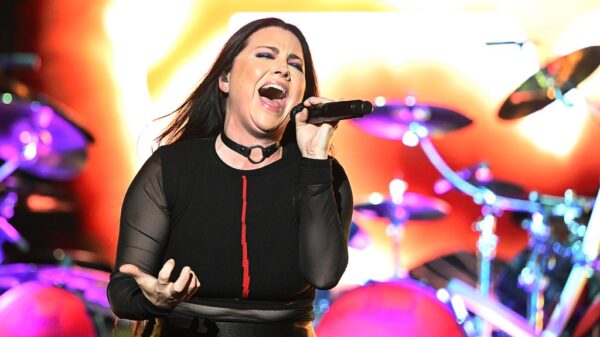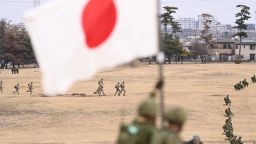A Japanese warship is set to increase its military capabilities by being outfitted with Tomahawk cruise missiles, which can strike targets up to 1,000 miles away. The JS Chokai, an Aegis-equipped guided-missile destroyer, is heading to the United States for a year-long deployment aimed at modifications and crew training necessary for the new missile system. This move is part of a broader strategy by Washington and its allies to bolster defense capabilities amidst growing military expansions from regional adversaries such as China and North Korea.
Strengthening Defense Amid Rising Tensions
In early 2024, Japan signed a deal with the United States to acquire 400 Tomahawk missiles, a significant step in its plans to enhance defense spending in response to what Gen Nakatani, Japan’s Defense Minister, described as the “most severe and complex security environment” since World War II. According to Japan’s Defense Ministry’s annual white paper released in July, China’s military activities represent “the greatest strategic challenge” to Japan. The report highlights Beijing’s rapid military enhancements and its intensified activities in the region, particularly concerning the disputed Senkaku Islands in the East China Sea, claimed by both Japan and China.
During a military parade in Beijing on September 3, China showcased its military advancements, including formidable anti-ship missiles. With Xi Jinping in attendance, North Korean leader Kim Jong Un and Russian President Vladimir Putin were also present, highlighting a growing alliance among these nations. This development has raised concerns in Tokyo regarding regional stability and security.
Tomahawk Missiles: Offensive or Defensive?
The Japanese Defense Ministry stated that the Self-Defense Forces are “strengthening their stand-off defense capabilities” to swiftly counter invading forces. While Tokyo emphasizes the defensive nature of the Tomahawks, these missiles are widely recognized as offensive weapons. The US Navy categorizes them as “deep land-attack warfare” missiles, formally known as the Tomahawk Land Attack Missile (TLAM).
When Japan sought to purchase the Tomahawks in 2023, China reacted strongly, accusing Tokyo of violating its post-World War II pacifist constitution, which traditionally restricted the Japanese military to defensive roles. Mao Ning, spokesperson for China’s Foreign Ministry, criticized the US and Japan’s actions, asserting that they aggravate the arms race and threaten regional peace and stability.
Tomahawk missiles have a proven track record, having been deployed in combat over 2,000 times, including recent operations against Iranian nuclear facilities. According to their manufacturer, Raytheon, these missiles can accurately hit targets from a distance of 1,000 miles, even in heavily defended airspace. Besides naval vessels, Tomahawks can also be launched from submarines and land platforms.
The JS Chokai, measuring 528 feet and weighing 9,500 tons, is equipped with 90 vertical launch cells. These cells can deploy various munitions, including surface-to-air missiles and anti-ballistic missiles. The destroyer is comparable to the US Navy’s Arleigh Burke-class destroyers.
In addition to Japan, other nations have joined the ranks of those capable of launching Tomahawk missiles. In December 2022, Australia successfully fired a Tomahawk from the destroyer HMAS Brisbane off the US West Coast. The Australian Defense Ministry plans to acquire 200 Tomahawks to enhance its naval capabilities for long-range precision strikes against land targets.
As Japan prepares to integrate the Tomahawk missiles into its naval operations, the JS Chokai aims to be operational by the summer of 2025, following a series of tests, including live-fire exercises. This development underscores Japan’s commitment to adapting its defense strategy in an increasingly complex security landscape across the Asia-Pacific region.






































































